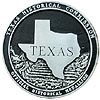Ferry service along this stretch of the Rio Grande evolved as population in the area increased. In 1836, General Jose Urrea used rowboats at the Paso Real ferry near the later site of Fort Brown en route to Goliad. General Vicente Filisola used the same service on his retreat from the Battle of San Jacinto. Charles Stillman, a Matamoros merchant and businessman, and his estate owned most of the ferry operations near this site from about 1846. The three main ferry ports were located at newly emerging Brownsville, Anacuitas (also called Paso Libre, then Shannondale and later Freeport) and Mansfield. Brownsville and Matamoros were integral to one another and the ferries, or chalans, were a lifeline between them. During the Civil War, the Confederates used ferries to transport cotton to Mexico while southern ports were blockaded by the Union Navy. During Union occupation of Brownsville in 1863, the banks of the Rio Grande were teeming with families waiting to cross the river into exile in Mexico. In the 1880s the ferry company built a plank walk from the railroad tracks to the Brownsville ferry dock because of complaints from passengers who had tired of walking through six inches or more of mud. The walk expanded as the ferry dock relocated several times, and soon the space was filled with a variety of shops catering to the bustling crowds of travelers. The Brownsville-Matamoros bridge was erected in 1910, but for a time only freight traffic on the river decreased. When the gateway bridge was built in 1928, the need for ferryboats vanished, and the boardwalk, by this time as much a part of local life as the river itself, vanished with them. (2000)
This page last updated: 7/15/2008 |
|
|
Related Themes: Texas C.S.A., Texas Confederate States of America, Confederacy
Explore other
Texas Confederate Historical Markers.
|


